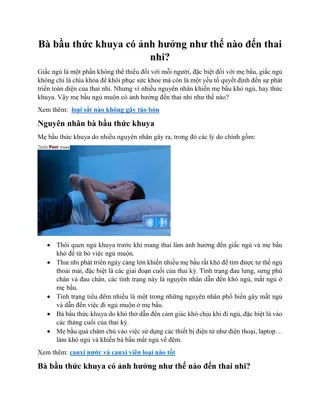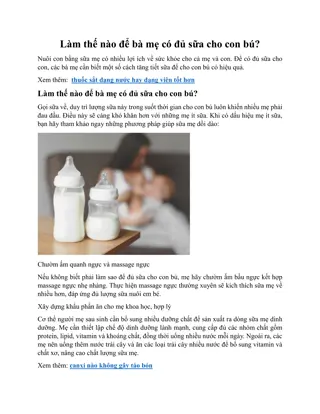The Metatheater of Blackness in Danaids, Dunbar, and Ellison
Explore the themes of identity, masks, and performance in the works of Danaids, Dunbar, and Ellison, as they delve into the complexities of black experience through the use of masks and metaphorical theatricality. The juxtaposition of ancient Greek tragedy and modern American literature reveals the enduring significance of the mask as a symbol of cultural identity and self-presentation.
Download Presentation

Please find below an Image/Link to download the presentation.
The content on the website is provided AS IS for your information and personal use only. It may not be sold, licensed, or shared on other websites without obtaining consent from the author. Download presentation by click this link. If you encounter any issues during the download, it is possible that the publisher has removed the file from their server.
E N D
Presentation Transcript
The Metatheater of Blackness Danaids, Dunbar, and Ellison Sarah Derbew, Harvard University University of Warwick 25 October 2018
Modern Mask We wear the mask that grins and lies, It hides our cheeks and shades our eyes, -- This debt we pay to human guile; With torn and bleeding hearts we smile, And mouth with myriad subtleties. Paul Laurence Dunbar 1895: 21
Change the Joke and Slip the Yoke Here the darky act makes brothers of us all. America is a land of masking jokers. We wear the mask for purposes of aggression as well as for defense, when we are projecting the future and preserving the past. In short, the motives hidden behind the mask are as numerous as the ambiguities the mask conceals. Ralph Ellison 1958: 109
Greek tragic mask (replica) Attic pentelic marble. Tragic Theatre Mask, Hellenistic period, 19.5 cm, National Archaeological Museum (Athens)
Greek women on Attic pottery (black sun-struck race, Suppl. 154-5) Attic ceramic, Two-handled jar (amphora) depicting a woman in a swing and four men, ca. 540-520 BCE, 40.1 cm, Museum of Fine Arts, Boston
Pelasgus encounters the Danaids Pelasgus: : From what country is this company whom I address, [this company] wearing non-Greek clothes and flaunting foreign robes and headbands? The clothes of these women are not Argive, and they are not from any place in Greece. This is a marvel, how you all have fearlessly dared to come to this land, although you were neither presented by the heralds nor a sponsor, and you came without any guides. Yet the boughs, according to the law of the suppliants, are certainly arranged beside you before the gods in assembly. It is a reasonable guess that your land is Greece in respect to this alone. And for the other matters, it would be customary to guess many things still if there were not a voice informing me as I stand beside you. ; . , . , . 235 240 245 : Chorus: You have spoken a true speech about our clothes. Suppliant Women, 234-246
Pelasgus query Chorus: This speech will be plain and short. In respect to our lineage and to the seed of the cow who bore a fine son (Epaphus), we proclaim that we are Argives. And thus I will lay out these words to be true, as it is warranted by reason. : , , . 275 : , , , . [ ] , Pelasgus: You all are uttering incredible words for me to hear, strangers, How this (pointing to them) is the Argive people. Rather, you resemble Libyan people More than our native women in any way, And the Nile might have borne such a crop (like you). [The impressed mark of Cyprus has been similarly struck On womanly dies by male craftsmen] I hear that there are Indian nomads who ride over lands while saddled on camels that resemble horses and live in the town neighboring the Aithiopians. And if you all were arrow-shooters, I would liken you to the meat-eating man-hating Amazons. 280 285 Suppliant Women, 274-289
Themiscyra Argos India [Cyprus] Libya Nile
Pelasgus finishes his query : Pelasgus: You all are uttering incredible words for me to hear, strangers, How this (pointing to them) is the Argive people. Rather, you resemble Libyan people More than our native women in any way, And the Nile might have borne such a crop (like you). [The impressed mark of Cyprus has been similarly struck On womanly dies by male craftsmen] I hear that there are Indian nomads who ride over lands while saddled on camels that resemble horses and live in the town neighboring the Ethiopians. And if you all were arrow-shooters, I would liken you to the meat-eating man-hating Amazons. If I were taught further, I would know this, Namely how your people and seed are Argive. , , , . [ ] , , . , . 280 285 290 Suppliant Women, 277-290
Conclusion The Danaids use words and actions to perform their Egyptian Greek identity Their (metaphorical) masks are slippery markers of identification The Danaids illuminate the limitations of modern race s color-driven definition
Select bibliography Austin, J.L. [1962] (2016) How to do things with words: lecture II, in Henry Bial and Sara Brady (eds.) The Performance Studies Reader, third edition. Routledge: 205-10. Brill, Sara (2009) Violence and Vulnerability in Aeschylus s Suppliants, in William Wians (ed.) Logos and Muthos: philosophical essays in Greek Literature. SUNY Press: 161-80. Brooks, Daphne A. (2006) Bodies in Dissent: Spectacular Performances of Race and Freedom. Duke University Press. Crenshaw, Kimberl (1993) Mapping the Margins: Intersectionality, Identity Politics and Violence Against Women of Color, Stanford Law Review 43: 1241-99. Delgado, Richard and Jean Stefancic [2001] (2012) Critical Race Theory: An Introduction, second edition. New York University Press. Dunbar, Paul Laurence (1895) Majors and Minors. Hadley and Hadley Publishers. Duncan, Anne (2006) Performance and Identity in the Classical Greek World. Cambridge University Press. Ellison, Ralph [1958] (1995) Change the Joke and Slip the Yoke, in John F. Callahan (ed.) The Collected Essays of Ralph Ellison. The Modern Library: 100-12. Hall, Edith (1989) Inventing the Barbarian: Greek Self-Definition through Tragedy. Oxford University Press. Johansen, H. Friis, and Edward W. Whittle (eds.) (1980) Aeschylus Supplices (Volume I-II). Gyldendal Publishing House. Kamen, Deborah (2013) Status in Classical Athens. Princeton University Press. Loraux, Nicole (1987) Tragic Ways of Killing a Woman, translated by Anthony Forster. Harvard University Press. McCart, Gregory (2007) Masks in Greek and Roman theatre, in Marianne McDonald and Michael Walton (eds.) The Cambridge Companion to Greek and Roman Theatre. Cambridge University Press: 247-67. Miller, Margaret C. (2000) The Myth of Bousiris: Ethnicity and Art, in Beth Cohen (ed.) Not the Classical Ideal: Athens and the Construction of the Other in Greek Art. Brill Press: 413-42. Rabinowitz, Nancy Sorkin (2014) Were Aeschylus Suppliants Women of Color?, American Philological Association Annual Meeting. Chicago, IL. [Cited with permission of the author] Snowden, Frank Jr. (2010) Iconographical Evidence on the Black Populations in Greco-Roman Antiquity, in David Bindman and Henry Louis Gates Jr. (eds.) The Image of the Black in Western Art: From the Pharaohs to the Fall of the Roman Empire (Volume I). Harvard University Press: 141-250. Spivak, Gayatri Chakravorty (1994) Can the Subaltern Speak? in Patrick Williams and Laura Chrisman (eds.) Colonial Discourse and Post-Colonial Theory. Columbia University Press: 66-111. Taplin, Oliver (1977) The Stagecraft of Aeschylus: The Dramatic Use of Exits and Entrances in Greek Tragedy. Oxford University Press. Wohl, Victoria (2010) Suppliant Women and the Democratic State: White Men Saving Brown Women from Brown Men, in Karen Bassi and J. Peter Euben (eds.) When Worlds Collide: Classics, Politics, and Culture. Lexington Books: 409-35.
Terracotta, amphora of Memnon and two warriors, ca. 530 BCE, 40.3 cm, Metropolitan Museum of Art (NY)
Attic ceramic, pelike of Andromeda and servants, ca. 460 BCE, 44 cm, Boston MFA























